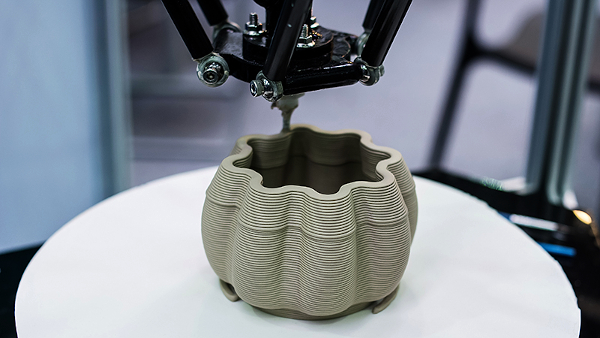Scientists at the International Advanced Research Centre for Powder Metallurgy and New Materials (ARCI), an autonomous R&D Centre of Department of Science and Technology (DST) in their recent study utilized an environmentally benign thermal gelation property of methylcellulose (MC) for shaping of ceramics through 3D printing.
Ceramic parts are generally produced from powder formulations with additives using various shaping processes followed by post thermal treatments. Most of the high-end applications require complex geometries with micro-features, which is a major limitation of ceramic shaping process. Further, machining of ceramics to achieve close dimensional tolerances is also extremely difficult due to their hardness and brittle nature.
3D printing process based on the virtual design dictating the nozzle path for printing layer-on-layer within close tolerance offers new possibilities for near-net shaping. However, the 3D process is only a shaping procedure, and the property of the final part strongly depends on composition and microstructure, which are dictated by the thermal processing after printing. Hence, the optimization of processing parameters with respect to flow properties and tailoring of defect-free microstructures have been challenging.
The ARCI team used the thermal gelation property of methylcellulose (MC), a chemical compound derived from cellulose used as a thickener and emulsifier in various industrial products like paints and demonstrated the 3D printing of advanced ceramics with MgAl2O4 spinel. In this process, they have employed a simple and eco-friendly heating technique, unlike UV based methods, which may have various environmental impacts.
In the complex viscosity versus temperature plot for spinel formulated with 0.20 weight% of MC, a steep rise in viscosity observed at 35-45°C clearly indicated the gelation process. The exposure to such temperature caused dehydration of hydrated methoxyl groups, followed by hydrophobic association, giving rise to the formation of the gel network.
(a) Complex viscosity plot Methyl Cellulose-based spinel (b) 3D printed samples
Based on these results, the team carried out 3D printing using a moldable paste with a concentration of 0.25% of methylcellulose having shear-thinning rheology. The components while printing were exposed to 45-60oC by means of an air heater, which ensured the temperature uniformity. Printed samples were found to be within the expected dimensional tolerances. Sintered (compacted and forming a solid mass of material by heat or pressure without melting it to the point of liquefaction) at 1650oC, the parts have shown a density of more than 98% of the theoretical value.
“3-D printing using inexpensive printers is a huge business opportunity in point-of-use and distributed manufacturing in almost any sector which can be harnessed by MSMEs. Techniques that make the printing possible with different materials (plastics, ceramics, metals.) with desired properties are in huge demand,” said Prof Ashutosh Sharma, Secretary, DST.
In-situ thermally induced gelation process demonstrated in the present study is advantageous as the methylcellulose is used only at a very low concentration of 0.25 wt%. Further, the process developed by ARCI is eco-friendly and offers flexibility in post-processing, as in the case of conventional ceramic processing.
Source: PIB
Image Courtesy: iMechE
You may also like
-
New Heat-Based Approach To Cancer Treatment Can Reduce Chemotherapy Doses
-
Scientists Take A Major Step Towards Unification Of Classical & Quantum Gravity
-
India Graphene Engineering and Innovation Centre (IGEIC) Under the Vision of Viksit Bharat@2047 Launched
-
New High-Performance Gas Sensor can Monitor Low Level Nitrogen Oxides Pollution
-
Antidepressant Drug can be Repurposed for Treating Breast Cancer
